Chikomeni area
The village of Chikomeni lies about 40km south of Lundazi just a few km off the main road to Chipata. In the area around the village many mines are being worked for gemstones.
Dickson mine: Not far from the of Chikomeni local villagers discovered a pegmatite in a little forest surrounded by farmland. Mining began in early 2012 when pockets with fine citrin were found. 2 1/2 years later the pit grew into a 5 x 10m wide hole, 7 m deep, exhibiting the solid quartz core of the pegmatite at the bottom. The hard quartz is being mined by fire setting. unfortunately, the aquamarine recovered from this mine so far was of rather low quality.
Chief Zumwanda's mine: A quite recent discovery (2010) is the Zumwanda mine with spectacular amethyst crystals up to 40cm in length. Strong colour-zoning and large fluid inclusions make these amethyst crystals very attractive collectors pieces looking somewhat similar to those from the Goboboseb mountains in Namibia. Here the amethyst is related to pegmatites.
Mutangula mine: The Mutangula mine is a rather small pit worked for fine aquamarine. Mining was hampered by a solid quartz core in the centre of the pit. In July 2014 the miners started to remove the quartz by fire-setting. A video shows the whole procedure of fire-setting done at Mutangula mine to remove a solid quartz block.
Kamimbi mine: Close to Dickson mine another aquamarine mine was opened in 2014 and was dug to a depth of over 10m within a few months only.
Kaselahunga mine: The Kaselahunga mine is located on the Eastern side of the Chipata road near the border to Malawi. 'Kaselahunga' means in the local language 'running out of nshima' - the traditional mush made out of white maize and is the basic food in the whole of Zambia, Malawi, Mozambiqu and parts of the Congo. When the occurrence was discovered in 2009 the first miners didn't manage to find anything and they had to give up when the food they brought with them was finished. A year later a different group of miners tried again and couldn't find anything before the last meal was eaten. Based on the experience of the first two attempts a third group then brought lots of food to the site and started mining, but they had to give up too with no result after 'nshima' ran out. Finally, the forth group took only little supplies with them and it was them who produced the first gemstones from that mine: aquamarine, citrin, some spessartite. During our visit in July 2014 the mine was inaccessable because of the construction of new bridges along the only road into the area.
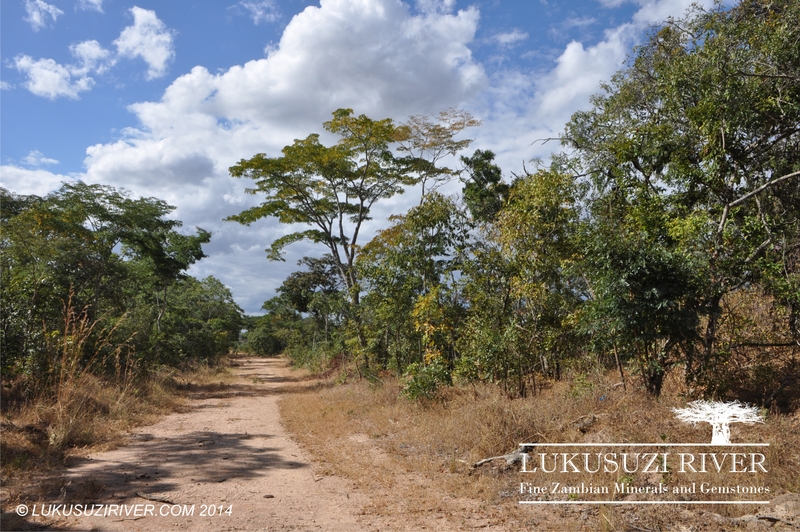
Dickson mine: Small bush roads lead towards the mine.
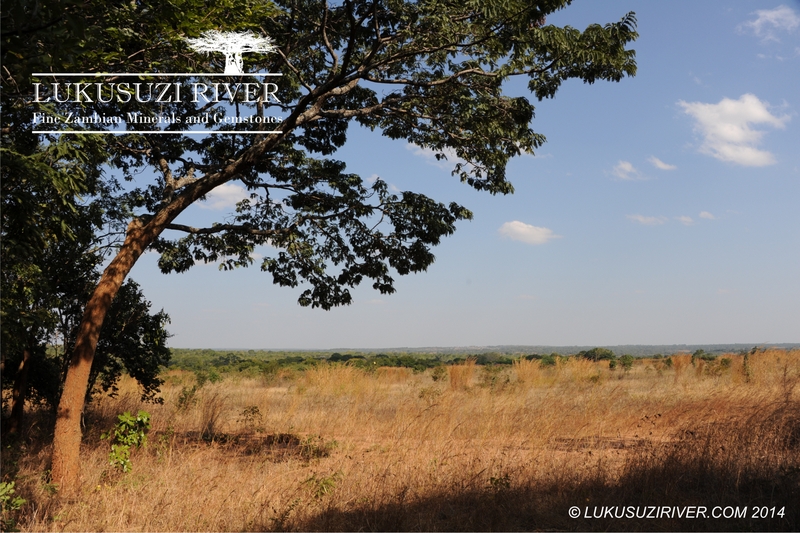
Dickson mine: The mine is situated in a little forest surrounded by farmland.
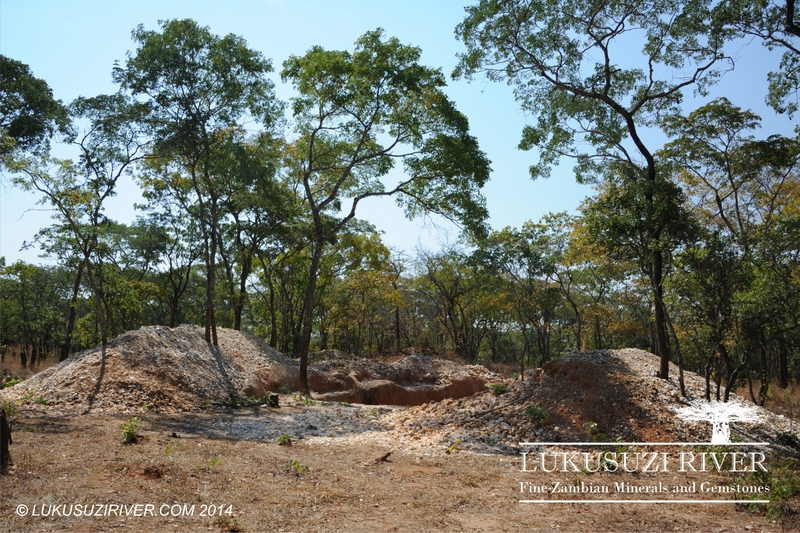
Dickson mine: Discovered in early 2012 the mine grew fast.
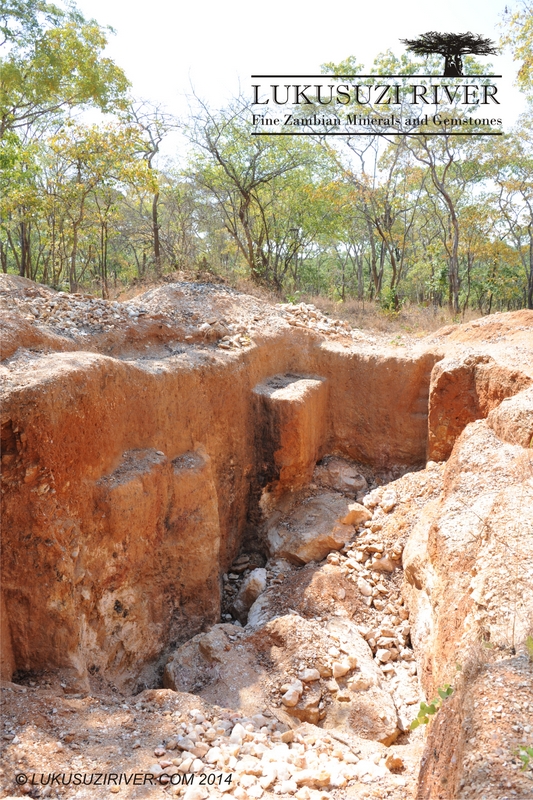
Dickson mine: The pit is as much as 7m deep. At the bottom the pegmatite consists of solid quartz.
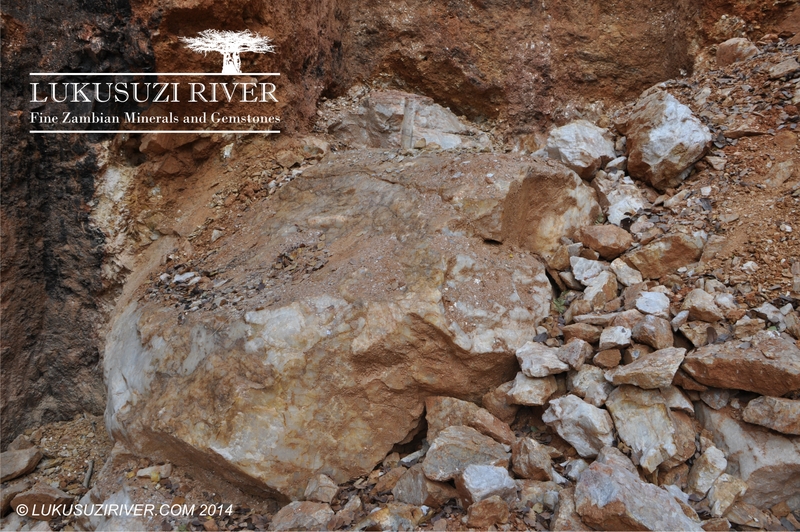
Dickson mine: The hard quartz is mined by hammer and chisel. The miners apply the ancient mining method of fire setting .
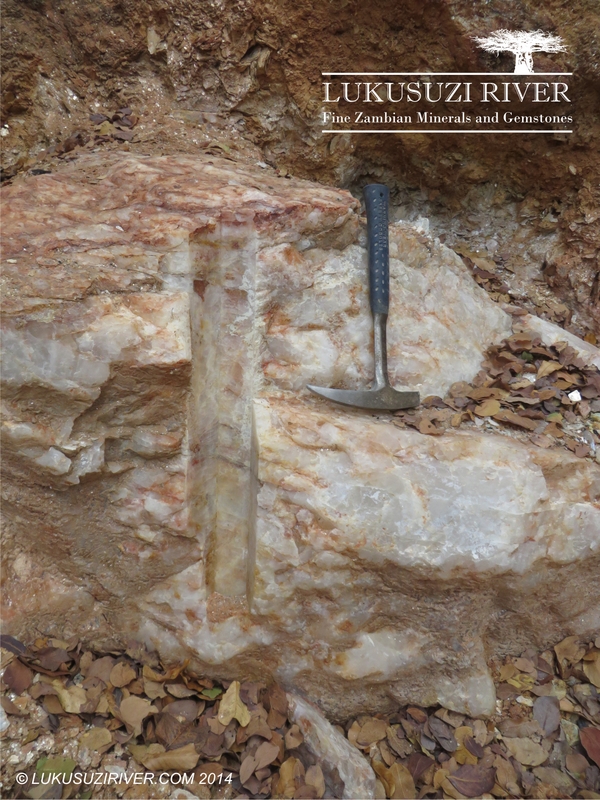
Dickson mine: Large imprint of an aquamarine crystal in quartz.
Chief Zumwanda's mine, October 2013
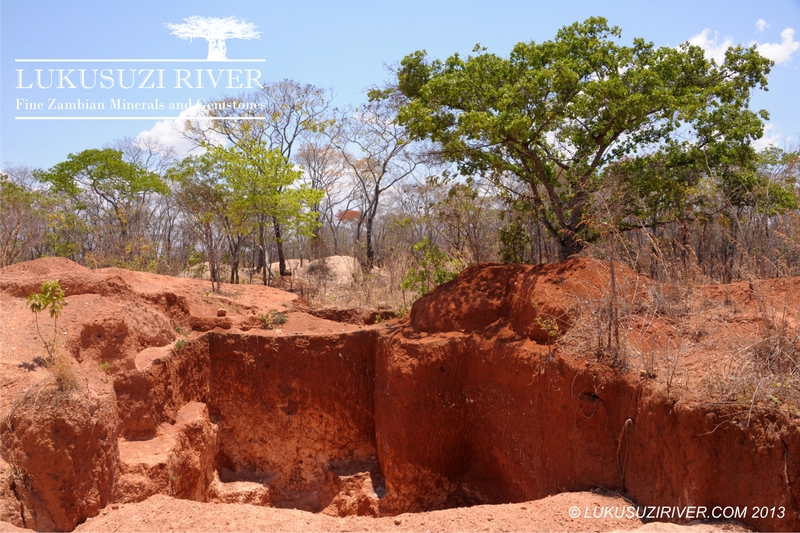
Zumwanda: Amethyst and aquamarine mine.
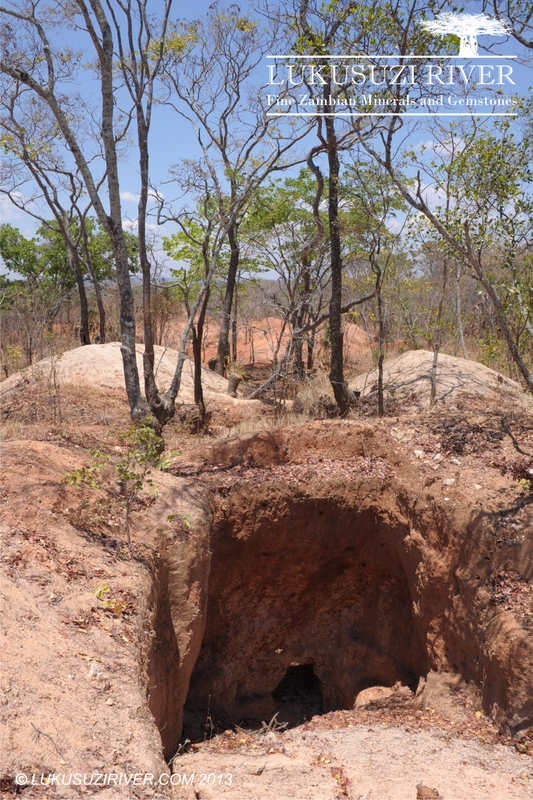
Zumwanda: Amethyst and aquamarine mine.
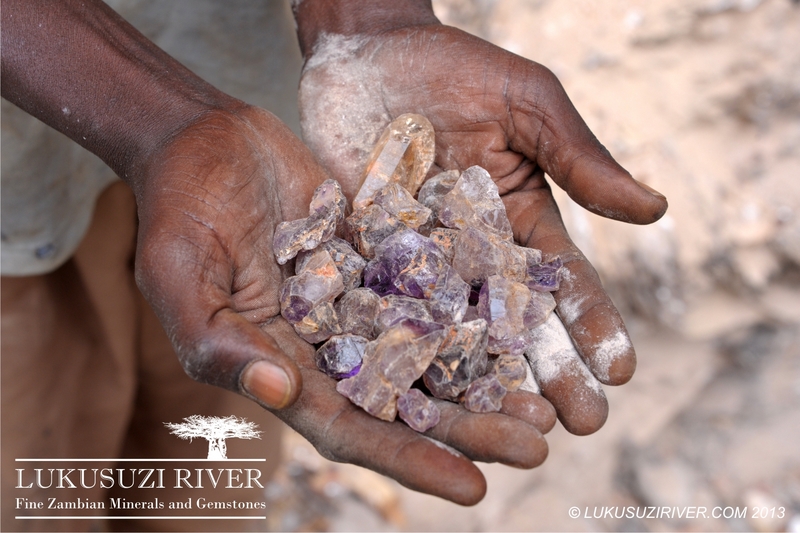
Zumwanda: Amethyst
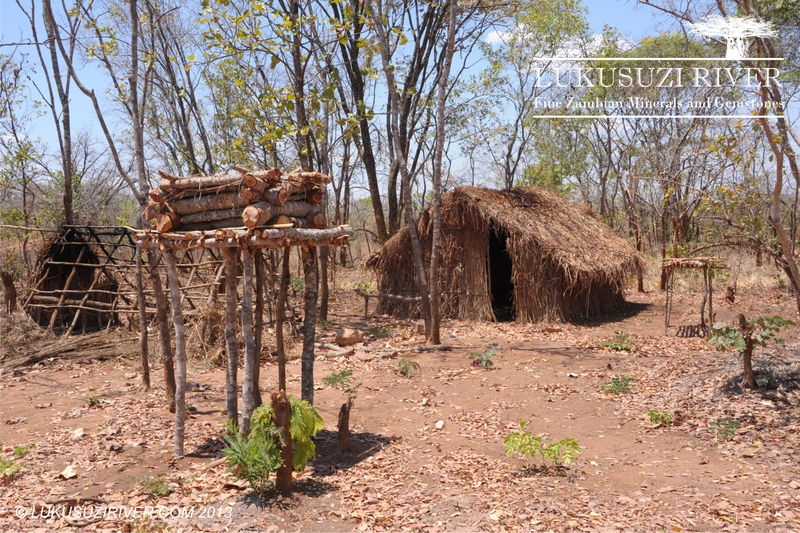
Zumwanda: Mine camp.
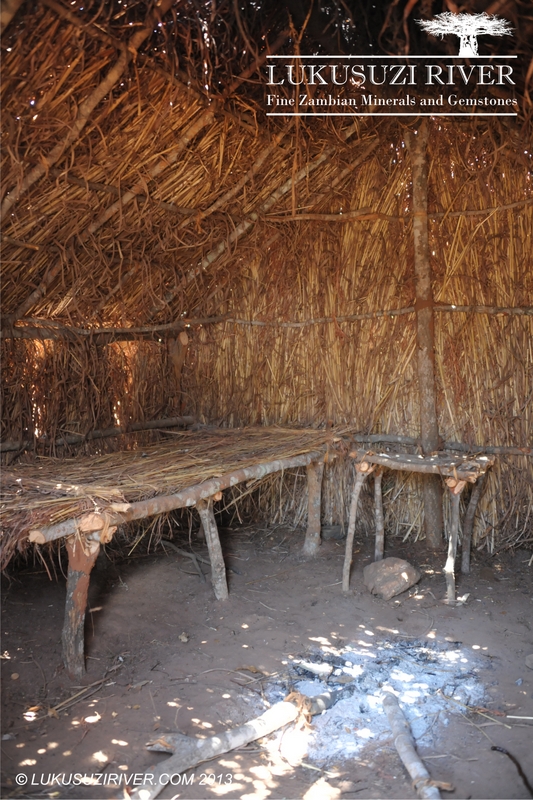
Zumwanda: A bed, a bedside table and a camp fire inside a straw house.
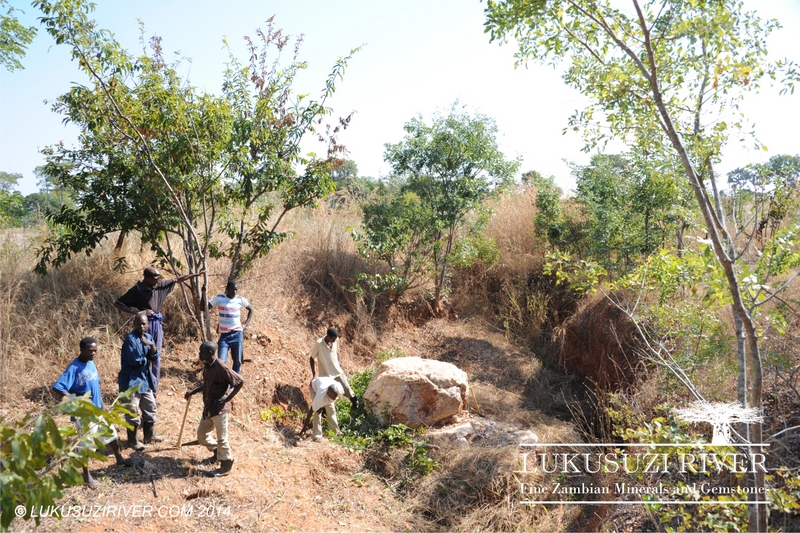
Mutangula mine: Small mine with a problem: the hard quartz core of the pegmatite is not easy to remove without machines or explosives.
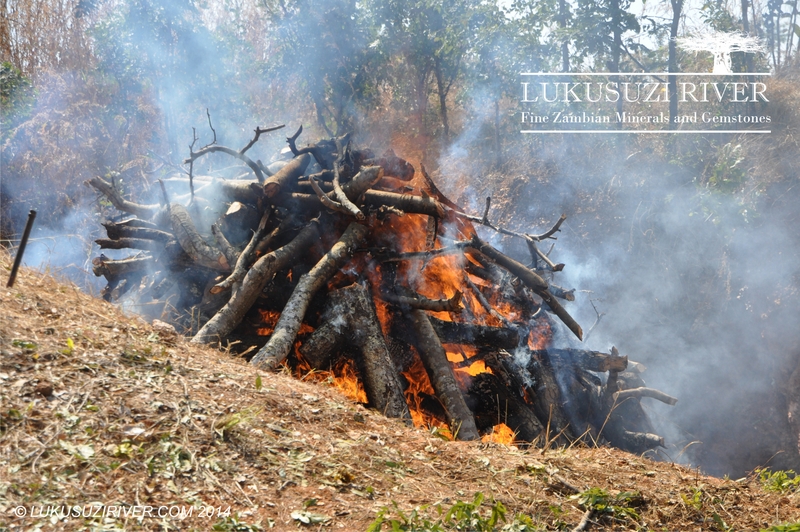
Mutangula mine: The solution is fire-setting.
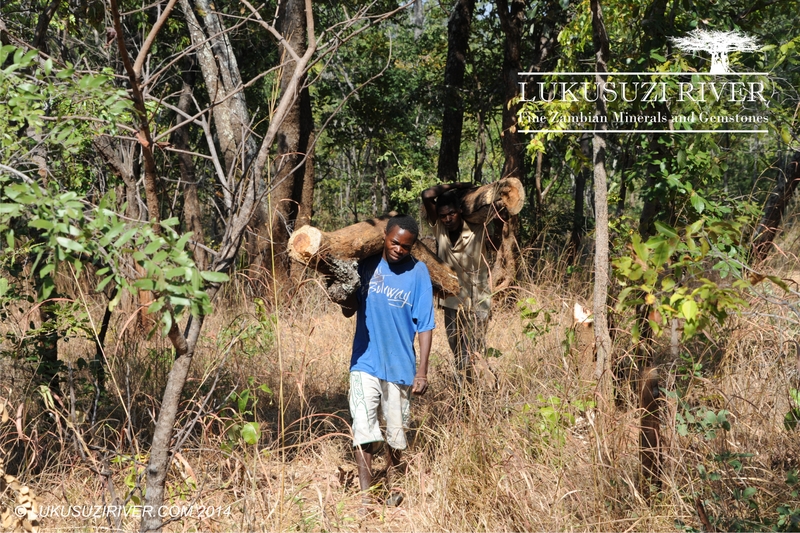
Mutangula mine: Fire-setting step 1 - collect lots of fire wood.
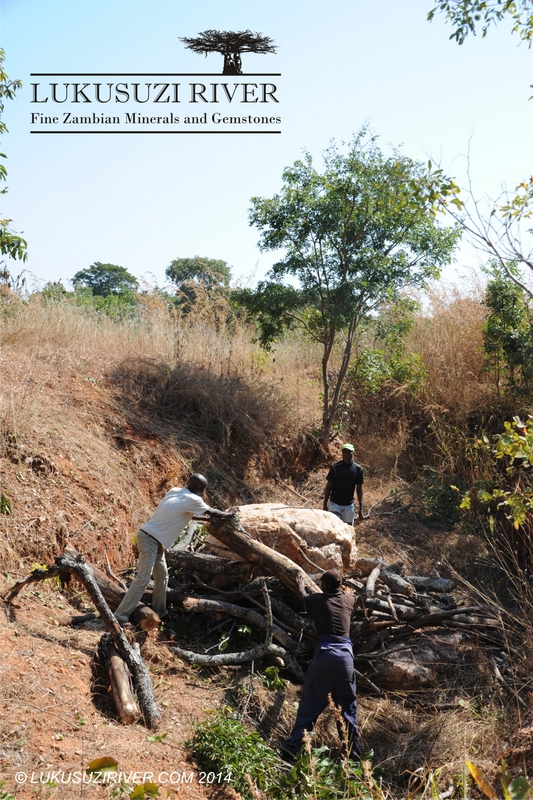
Mutangula mine: Fire-setting step 2 - pile it up around the rock to be removed.
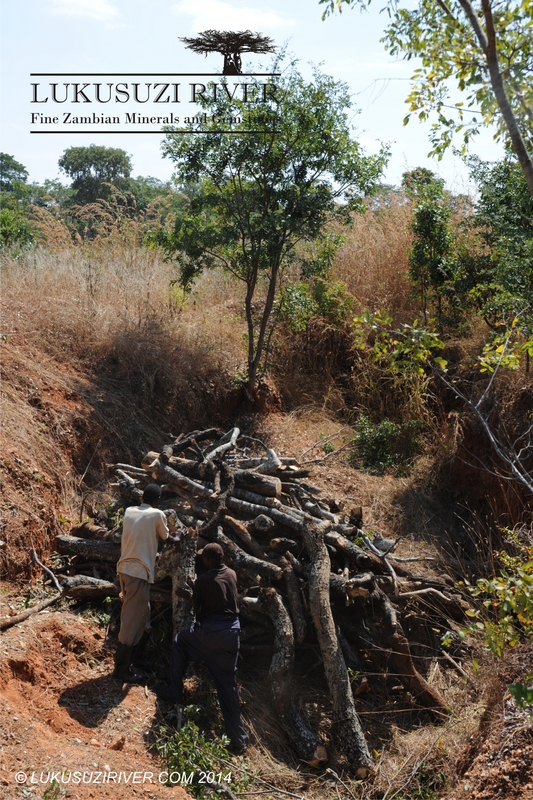
Mutangula mine: Make a big pile
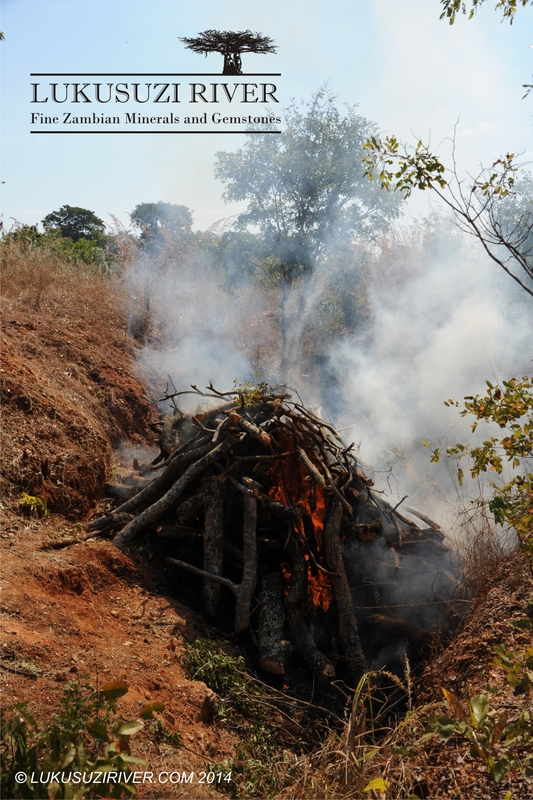
Mutangula mine: Fire-setting step 3 - light the fire
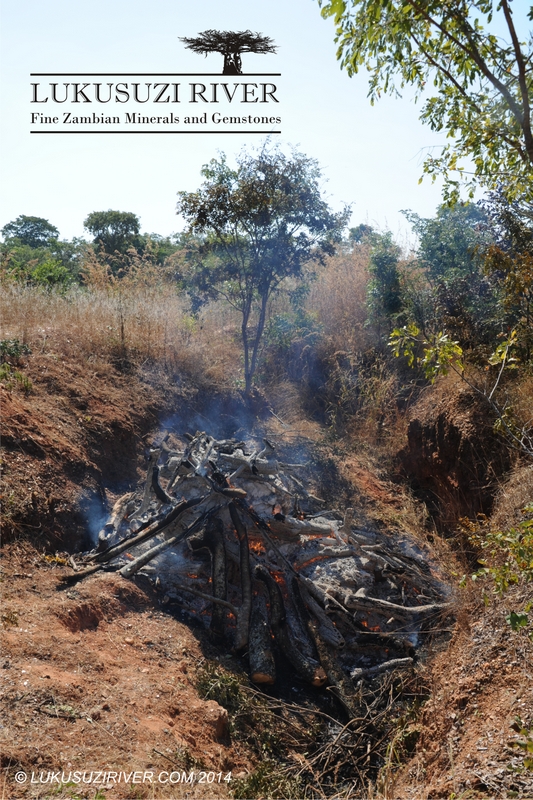
Mutangula mine: Fire-setting step 4 - let it burn down.
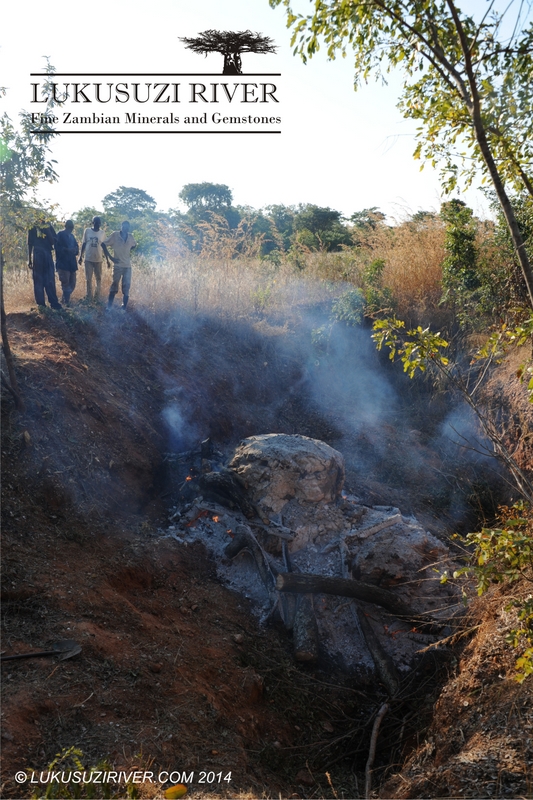
Mutangula mine: The rock is very hot now.
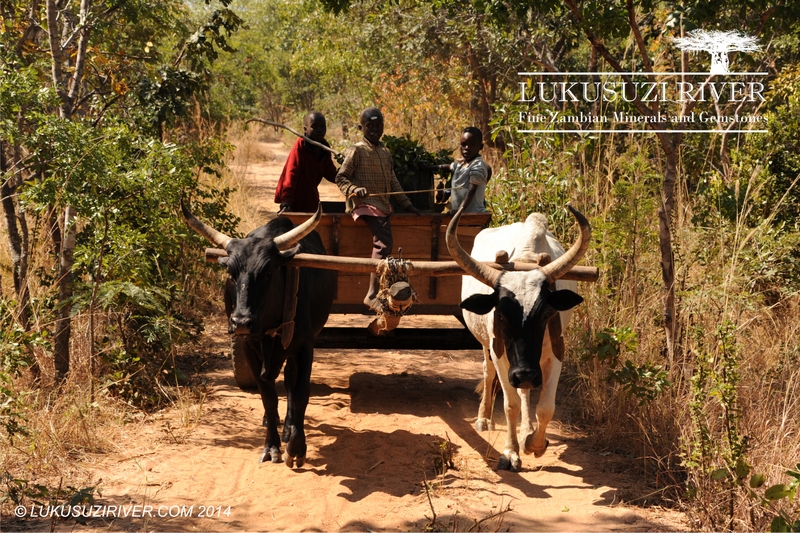
Mutangula mine: Fire-setting step 5 - get water.
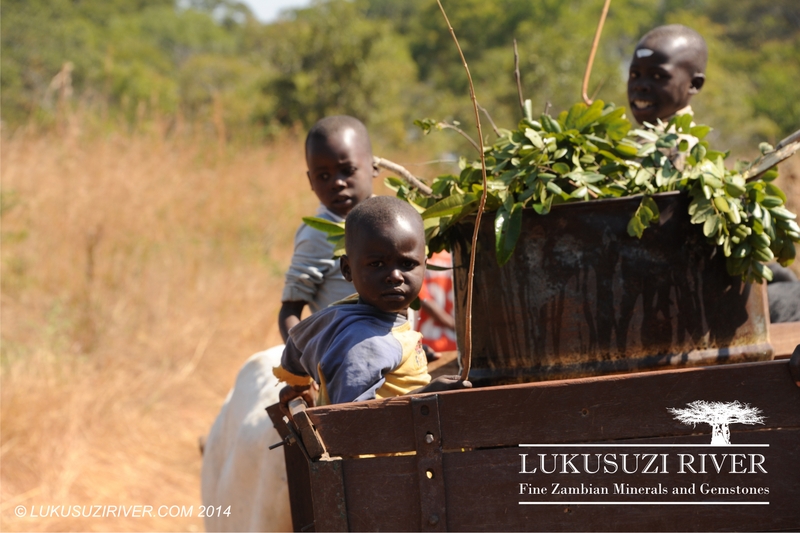
Mutangula mine: The leaves and twigs on top of the barrel prevent the water from spilling over during the bumpy ride.
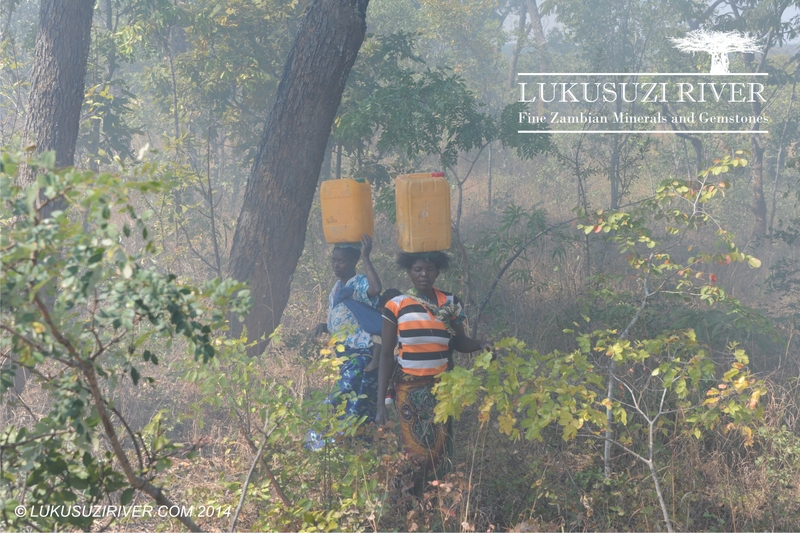
Mutangula mine: Getting the water on site.
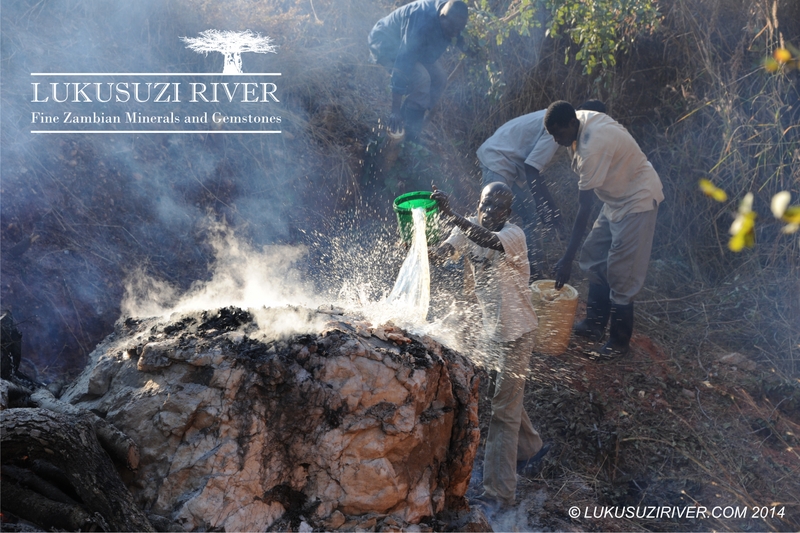
Mutangula mine: Fire-setting step 6 - throw the water on the hot rock to make it crack upon the temperature shock.
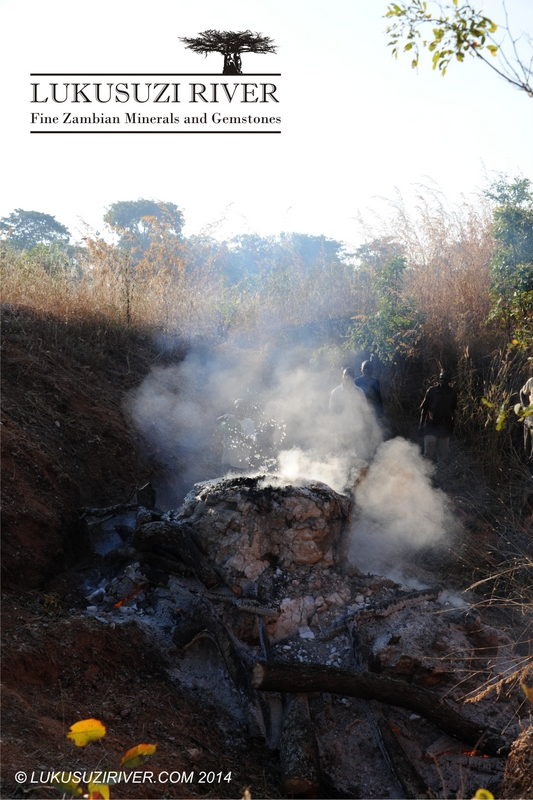
Mutangula mine: Quenching the rock.
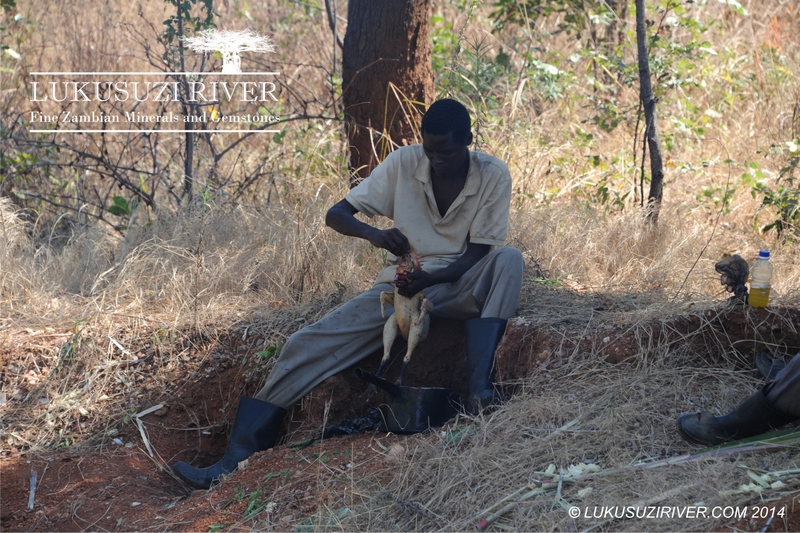
Mutangula mine: Fire-setting step 7 - sit back and wait for the rock to cool down.
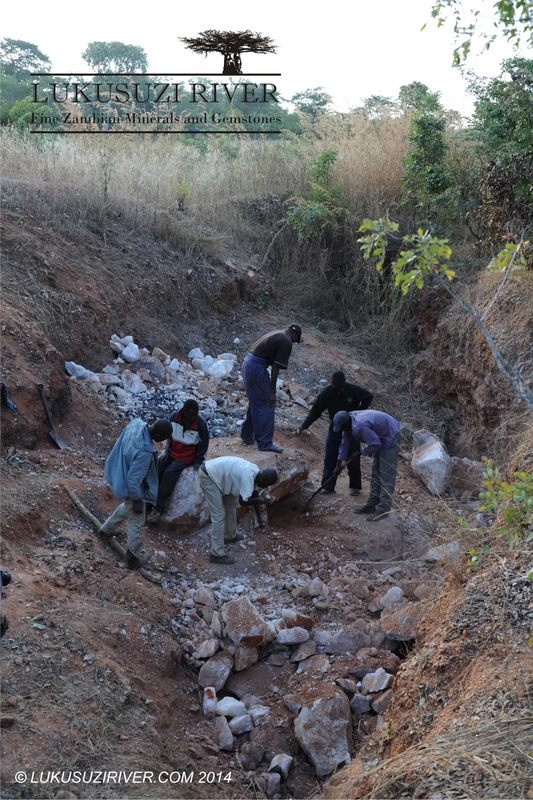
Mutangula mine: Fire-setting step 8 - When the rock has cooled start removing it without difficulty.
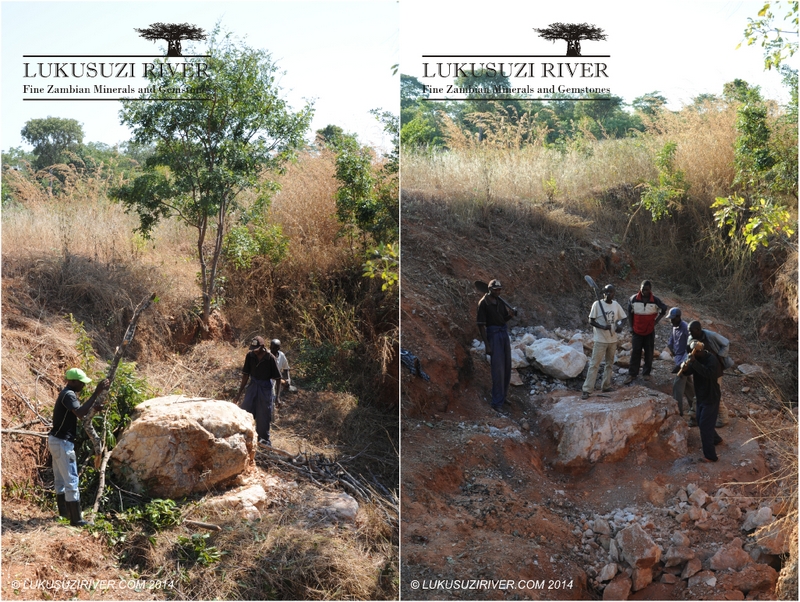
Mutangula mine: Before and after
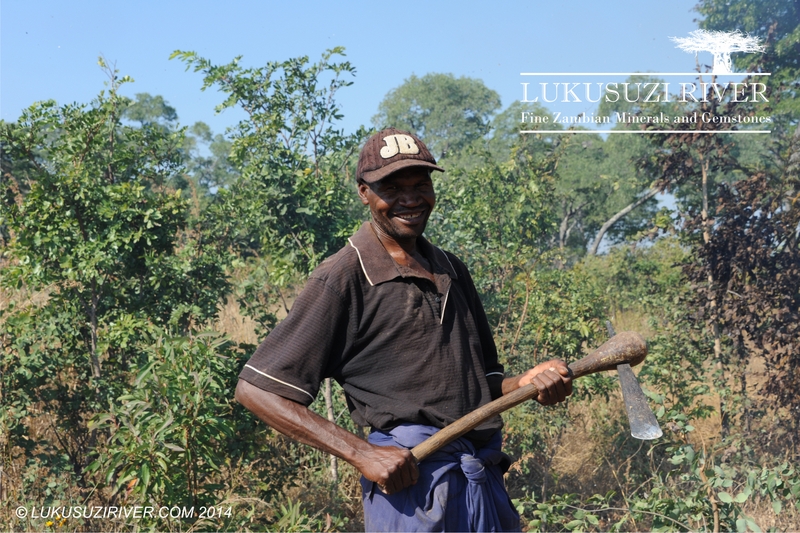
Mutangula mine: Miner with self-made axe (the blade is made out of leaf springs from old cars and trucks).
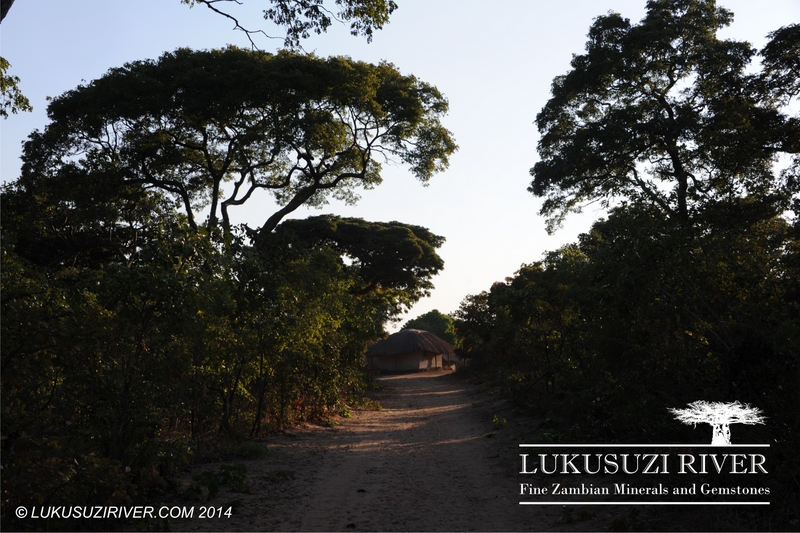
Mutangula mine: Evening mood at the nearby village.
Mutangula mine: Fire-setting at Mutangula mine. The video (8:46 min) might take some time to load. (HD quality is availabe in the video settings.)
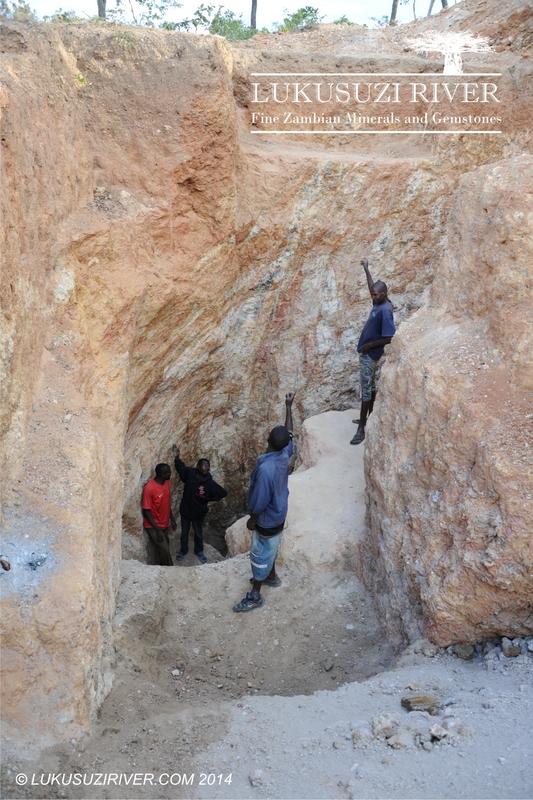
Kamimbi mine: Deep pit in a deeply weathered pegmatite

